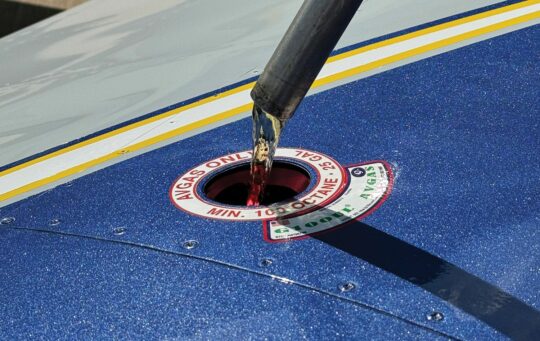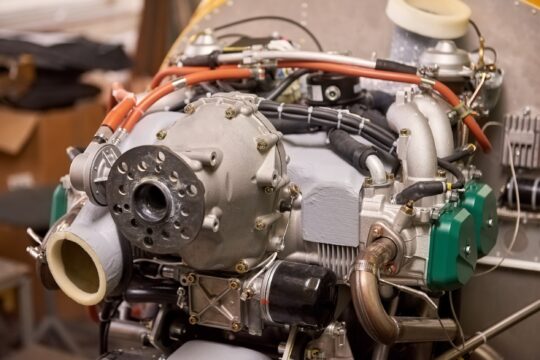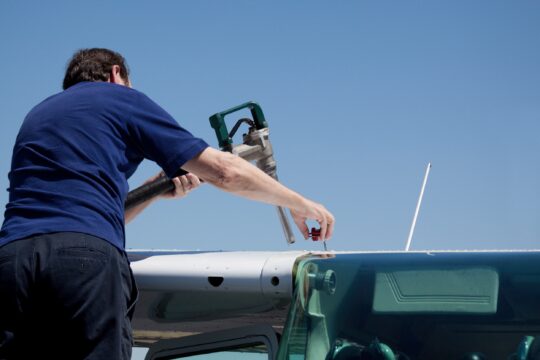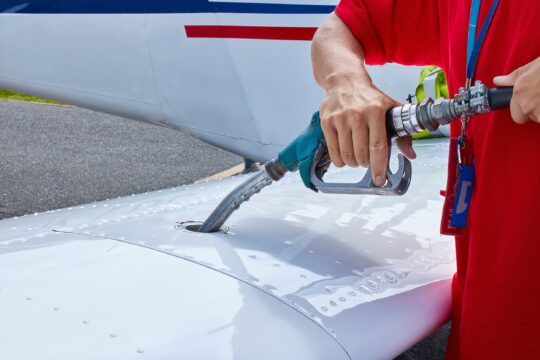 The ongoing issue of finding a replacement for leaded avgas took an ugly turn recently after Cirrus advised owners that use of anything other than an “approved” fuel would likely invalidate the engine warranty. “Per Continental and Lycoming, only approved fuels may be used for an engine to be covered by warranty. As the GAMI G100UL fuel is a non-approved fuel per Continental and Lycoming, engines known to have run this fuel may not be covered by the OEM engine warranty. For specific details, please refer to the respective Continental and Lycoming engine warranty documents,” Cirrus said in a statement. “While some aspects of the initial Cirrus testing of the GAMI G100UL fuel are encouraging, other areas, including materials compatibility, remain inconclusive.”
The ongoing issue of finding a replacement for leaded avgas took an ugly turn recently after Cirrus advised owners that use of anything other than an “approved” fuel would likely invalidate the engine warranty. “Per Continental and Lycoming, only approved fuels may be used for an engine to be covered by warranty. As the GAMI G100UL fuel is a non-approved fuel per Continental and Lycoming, engines known to have run this fuel may not be covered by the OEM engine warranty. For specific details, please refer to the respective Continental and Lycoming engine warranty documents,” Cirrus said in a statement. “While some aspects of the initial Cirrus testing of the GAMI G100UL fuel are encouraging, other areas, including materials compatibility, remain inconclusive.”
At issue is that the GAMI fuel has not been submitted to the ASTM for “approval” but has received FAA approval in the form of a Supplemental Type Certificate that applies to virtually every spark-ignition aviation engine made. Cirrus’ stance is that this is, therefore, not an approved fuel by way of ASTM.
Soon after, GAMI responded by noting that an SR22 has been flying on GAMI fuel since 2010. In its statement, GAMI said: “G100UL Avgas is fully approved for use in all Cirrus Aircraft and in all Continental and Lycoming engines!” In the case cited by Cirrus regarding fuels compatibility, GAMI says that “Cirrus failed to inspect the condition of the fuel tank before use of 100UL Avgas in the wing of their model year 2014, company owned, ‘R & D’ aircraft, an SR22T, N72DF. Therefore, Cirrus does not know that the fuel tank sealant had not already ‘failed,’ i.e., partially de-bonded, before Cirrus first began to use 100UL avgas in one wing of N72DF.” Moreover, GAMI says that “in 2013, Cirrus engineers fully tested G100UL Avgas at Cirrus in their fiberglass/epoxy wing fuel tanks and wrote a favorable report which was formally approved by the FAA. A few weeks after Cirrus first observed the condition of the PTE sealant in the wing of N72DF, Cirrus told GAMI that Cirrus had reverted back to the exclusive use of the industry standard polysulfide (PSD) sealant in the Cirrus tanks on their production line.” The company concludes by saying, “The FAA has fully investigated this matter, for nearly a year. To date, the FAA has found no ‘safety of flight’ issue associated with the single adverse report from Cirrus.”
Hot on the heels of the GAMI rebuttal, Lycoming chimed in with this statement: “Lycoming Engines provides a Limited Warranty against defects in material or workmanship. Lycoming’s Limited Warranty does not cover damage caused by operation outside of Lycoming’s published specifications or the use of non-approved fuels or lubricants. Lycoming publishes specifications for approved fuels in Service Instruction 1070. G100UL is not listed as an approved fuel in Service Instruction 1070. Lycoming evaluates warranty claims on a case-by-case [basis] in accordance with the terms of its Limited Warranty. However, customers should be aware that use of fuels not approved in Service Instruction 1070 would constitute operation outside of Lycoming’s published specifications.” The FAA followed by saying that warranty issues were between the manufacturer and the customer; it’s not in that chain at all.
And then came word that the key player in the EAGLE program for an unleaded avgas alternative had pulled its ASTM application. “Lyondell had balloted its ASTM Test Spec and had received some negative comments, so have pulled it and are addressing the feedback and plan to re-ballot in the near term,” Castagna quoted an FAA official as telling him, as reported on AVweb. Which now leaves Swift to complete its work on a 100-octane unleaded fuel and the already FAA-approved GAMI G100UL on the table, though it’s broadly considered that Lyondell/VP Racing will go back to work on remedying the unstated issues found in early testing. It’s unclear what those were, though it’s reasonable to assume they related to either the fuel’s ability to suppress harmful engine detonation or materials compatibility, or both.
In the days since that reporting, Lyondell clarified the status of its unleaded avgas, per reporting in AVweb. “LyondellBasell has not paused or suspended our efforts to obtain an ASTM test fuel specification. We continue to pursue ASTM certification for our UL100E unleaded fuel through the normal balloting process. We balloted a test fuel specification and research report on UL100E in May for the first time and the ballot closed on June 9, a week before the ASTM meeting. The ballot received 65 affirmative votes, 5 negative votes and 228 abstentions for a 93% affirmative rate. Since our first ballot received a negative comment on our proposed color method that we found persuasive and others we are still reviewing, we withdrew the ballot to make the correction and reach out to the other commenters. This is the standard procedure for making even minor changes to specifications. We will ballot a revised test fuel specification and research report for additional review and comment from the ASTM community as soon as we review the other comments and reach out to their authors. Since an ASTM specification is a required element of PAFI fleet authorization, we are committed to obtaining both as expeditiously as possible.” Parsing this, the “others we are still reviewing” is, again, unclear: Are the complaints of a similarly minor nature as the color of the fuel or is there more?

LSAs running the 900-series Rotax engines might be in a far better place than many should there be more trouble finding a true 100-octane unleaded replacement for avgas.
Since you’re reading this on ByDanJohnson, you’re probably wondering how this applies to you. Since most of the LSA market is powered by Rotax engines, it’s good to consider their guidance, which is relatively straightforward. In the current set of Service Instructions, Rotax defines the leaded option as our conventional avgas that conforms to ASTM D910, but also lists a number of other global standards including unleaded fuels that comply with ASTM D4814 as well as the UL94 conforming to ASTM D7547. According to Rotax, “In addition to AVGAS, various automotive fuel types with different quality are available. Due to various environmental, economic and political reasons a number of fuel types with different amounts of ethanol blend are available.”
Rotax then allows use of auto fuel with as much as 10% ethanol, though it notes that “it is the responsibility of the aircraft manufacturer to test their fuel system components and supply any further information on techniques, procedures and limitations of using ethanol blended fuel.” Some airframe manufacturers fall back on Rotax’s fuel recommendations rather than make their own, though the ASTM process theoretically puts that definition on the airframe manufacturer. At this point, Rotax doesn’t explicitly say the GAMI fuel can or cannot be used. For now it’s an academic point because while GAMI says that it has had fuel produced—making it “commercially viable”—it is not yet widely available. What’s more, the STC held by GAMI does not include Rotax engines, though, technically, if G100UL works on old-technology highly turbocharged powerplants there’s no reason to believe it won’t also work with Rotaxes. And remember back at the beginning that Cirrus’ prime argument wasn’t that the engine wouldn’t run well on G100UL but that there may be materials issues with the airframe and systems.
For now, if you’re flying behind (or in front of) a Rotax, you’re relatively well protected. Commonly available auto fuel is, in fact, the preferred fuel for most applications. Should there be continued issues with a candidate avgas replacement—say, one that doesn’t quite get to 100 octane, as required by the big engines—there’s also a viable path to using 94UL exists. Overall, then, for most airplanes in the LSA sector, fuel will continue to be an issue—something we all watch like a slow-motion train wreck—but primarily an economic one.




How long do we have to wait, before we get UL 94? Our Rotax engines would love it: no ethanol, no lead.
It’s available but not widely available, yet.
The EPA made a mistake requiring unleaded fuel for aircraft. With around 250,000 type certificated small aircraft operating maybe 25 hours per year, one large volcanic eruption places more lead in Earth’s atmosphere than all of the aircraft fleet on a yearly basis. And EPA refuses to acknowledge this huge natural source of lead and other toxins into Earth’s atmosphere from natural sources. Shameful people. Who will get them to say they made a mistake and stop this nonsense. I have asked them at least several times without a response. With how many billions of autos on Earth, it was only sensible to remove lead from auto gas. From aircraft fuel, not enough aircraft on Earth to justify removing lead from avgas. I believe ASTM knows this. But EPA is not listening to ASTM either. EPA has become a rogue organization requiring prosecution. EPA only knows selective facts and will not look at the complete picture. And only a US judge can force them to stop their selective fact process.
Maybe the Chevron decision will make EPA’s stance invalid.